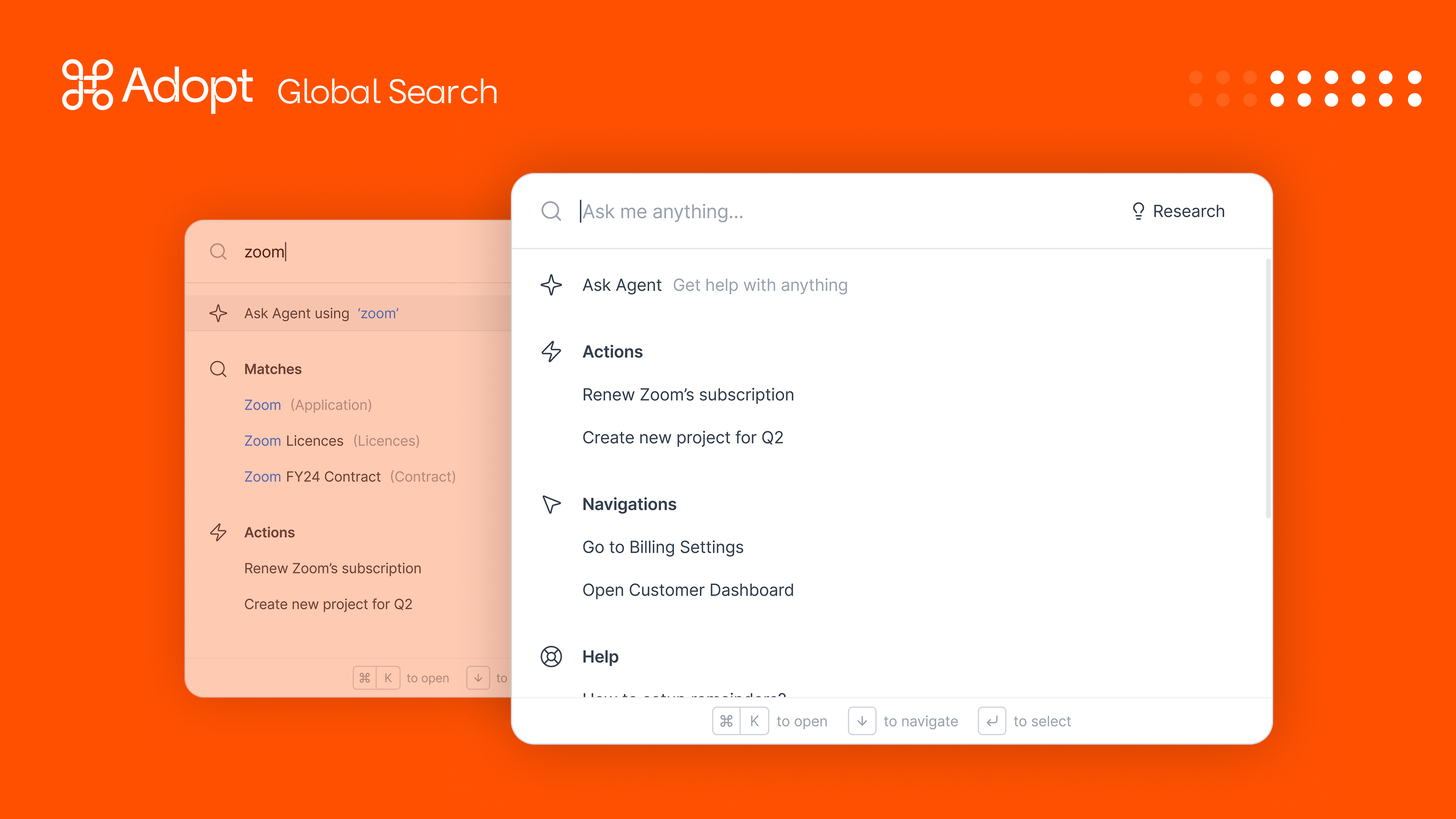What is the Agent Experience?
Agent Experience is the end-user layer where your customers interact with the agents you’ve built in Adopt’s Agent Builder. Think of it as your app’s Copilot interface — a smart, natural-language-driven surface where users can ask questions, trigger workflows, and get real outcomes without needing to click through menus or learn your product’s layout.Deployment Options
Adopt AI supports three powerful ways to bring this experience to life, depending on your app’s design preferences and engineering flexibility.1. SDK Deployment (Plug-and-Play UI)
Use the Adopt SDK to quickly embed a fully functional, styled Agent Experience inside your app. You can choose from two modes: **Copilot Sidebar **A persistent, collapsible assistant that sits across your app.
.png?fit=max&auto=format&n=82DIep5Awsf9H6BD&q=85&s=e855a18ffbd753ccf57e98f1b7a5b381)
A command-style search bar that lets users query, run actions, and get answers.

Note - The SDK is ideal if you want a fast, zero-design lift way to go live with agents.
2. API Wrapper Deployment
Use Adopt’s API wrappers to call the agent’s logic from anywhere inside your own frontend — using your design system and UI components. This is perfect if:- You want deeper customization or visual control.
- You need to inject agent functionality contextually (e.g. inside modals, dashboards, walkthroughs).
- You have embedded analytics or product flows that need agentic augmentation.
The agent’s intelligence is fully exposed via API, so your developers can build rich, native-feeling experiences.(This is coming very soon)
3. MCP Server Deployment
If you want to host your product’s agent on third-party chat clients, Adopt also offers a deeply configurable MCP (Model Context Protocol) server. You’ll still get all the functionality of the Adopt platform — including agent actions, observability, analytics, and tooling — while letting users interact with your agent wherever they are. It’s the easiest way to meet your users where they already live. (This is coming very soon)Where to Next?
Ready to get started?Jump into the Initial Setup guide or explore a specific use case using the menu on the left.